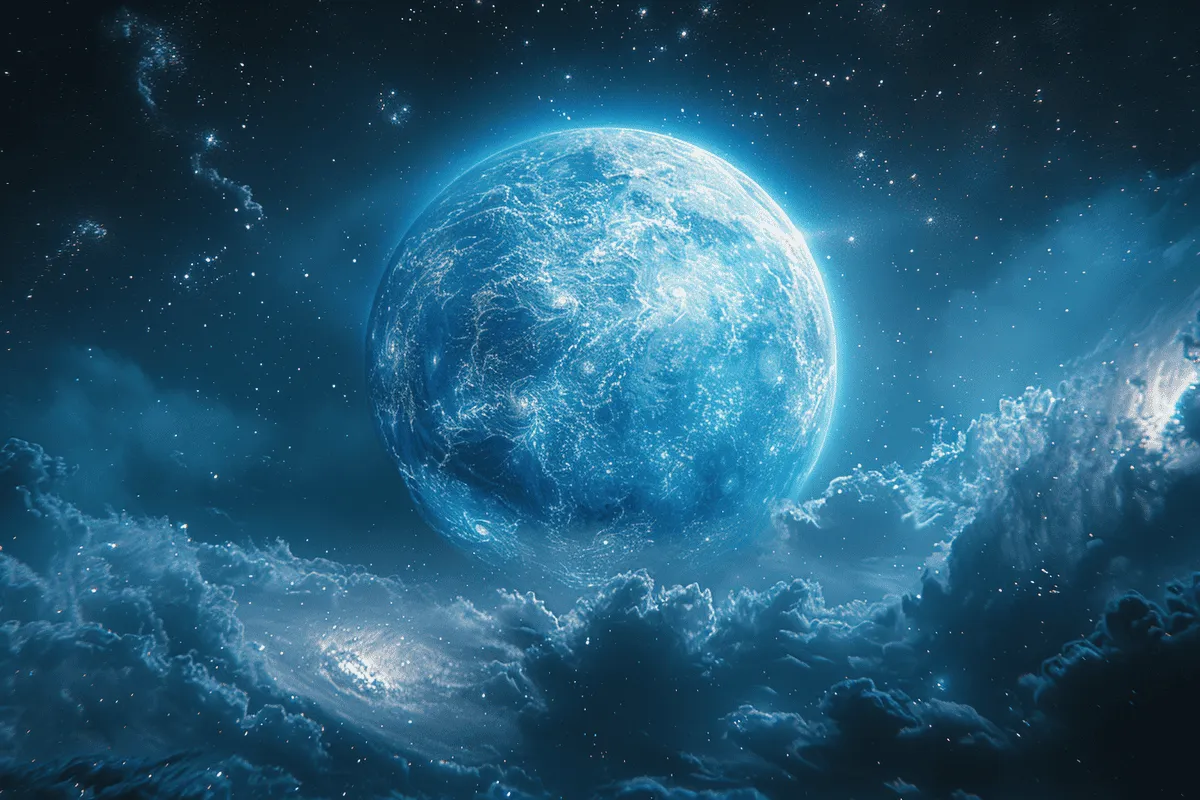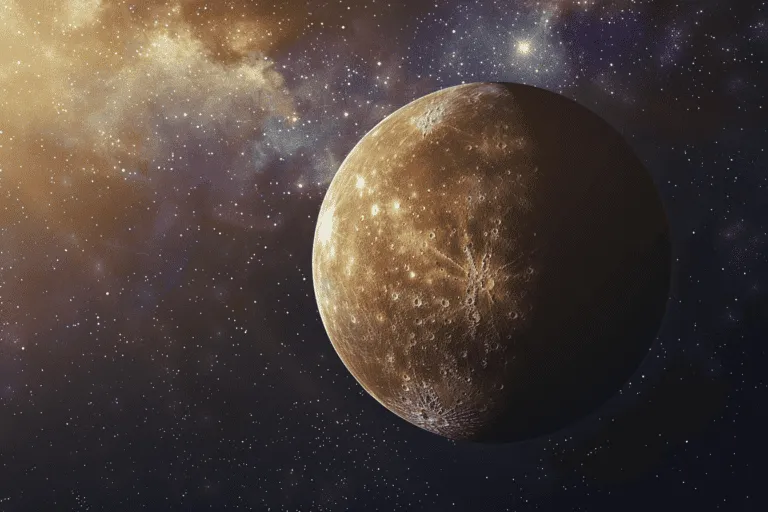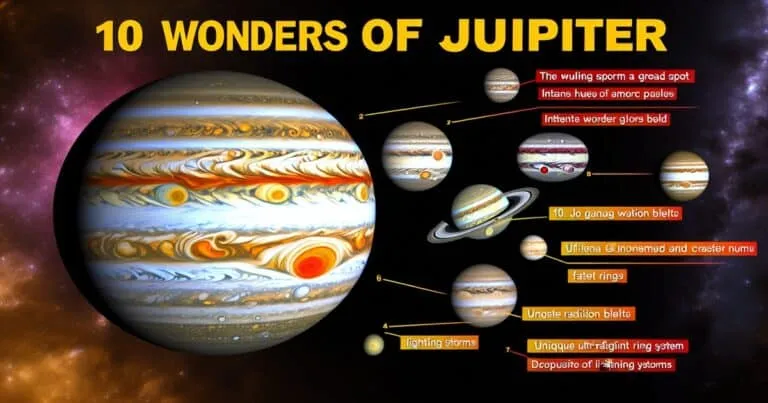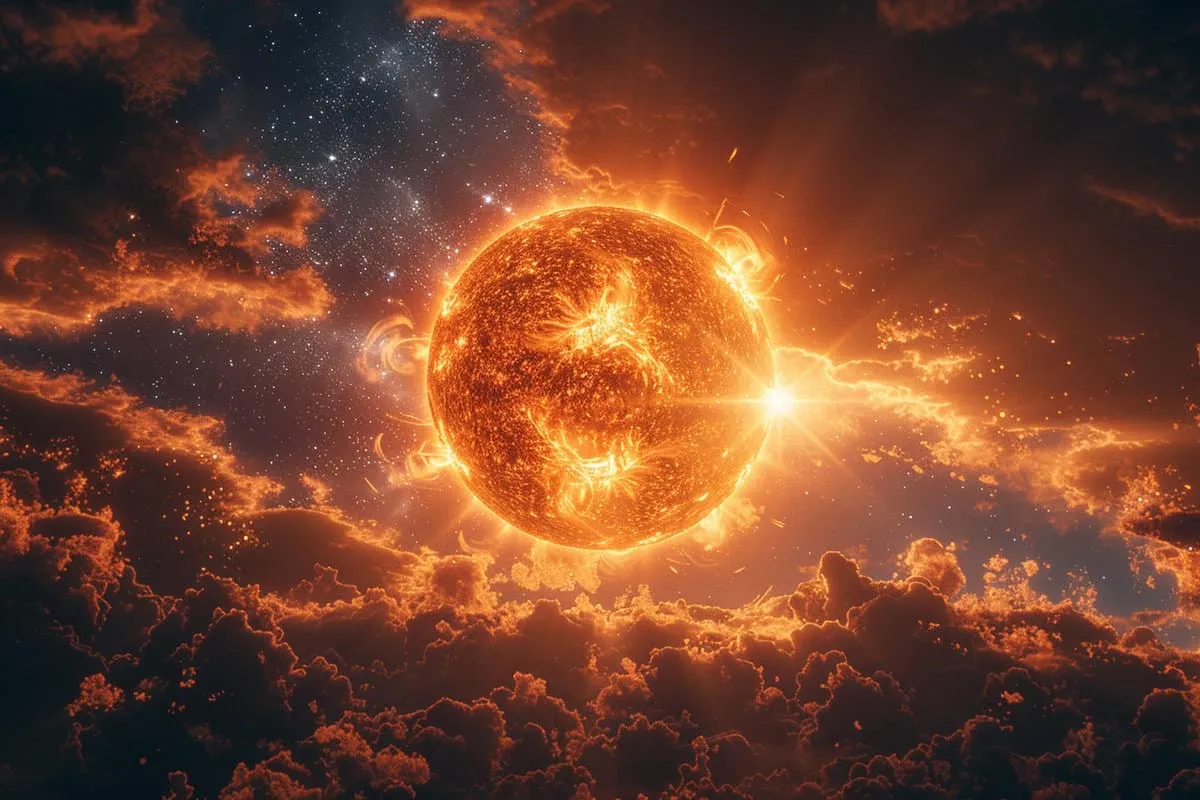10 Neptune Facts (Mysteries of the Eighth Planet)
Dive into the deep blue mysteries of Neptune, our solar system’s distant giant. Far beyond Earth’s cozy neighborhood, this ice giant holds secrets from the dawn of time, swirling in its cold, windy embrace.
With storms more ferocious than anything on Earth and a striking blue hue that captivates astronomers and space enthusiasts alike, Neptune stands as a testament to the vastness and variety of our universe.
Ready to journey through space and uncover what makes Neptune truly unique? Scroll down for an exploration of our top picks about this fascinating planet.

1. Neptune is the Eighth Planet from the Sun
Neptune holds the title of being the farthest major planet in our solar system from the Sun. This immense distance means that sunlight takes about 4 hours to travel from the Sun to Neptune, highlighting its remote position.
Given its vast distance, Neptune experiences some extreme conditions. One notable feature is its temperature. Amongst all the planetary giants, Neptune stands out as the coldest, with temperatures plunging down to minus 214 degrees Celsius (-353°F) at its cloud tops.
This icy giant’s orbit around our star is equally fascinating and lengthy. To complete one full orbit around the Sun, Neptune takes approximately 165 Earth years! Imagine celebrating just one birthday if you lived on Neptune; it would indeed be a once-in-a-lifetime event.
Despite these harsh conditions, Neptune’s allure lies in its stunning blue appearance and dynamic atmosphere, featuring fast-moving clouds and high-speed winds reaching up to 2,100 kilometers per hour (about 1,304 miles per hour). These characteristics make it an intriguing subject for astronomers and space enthusiasts alike.
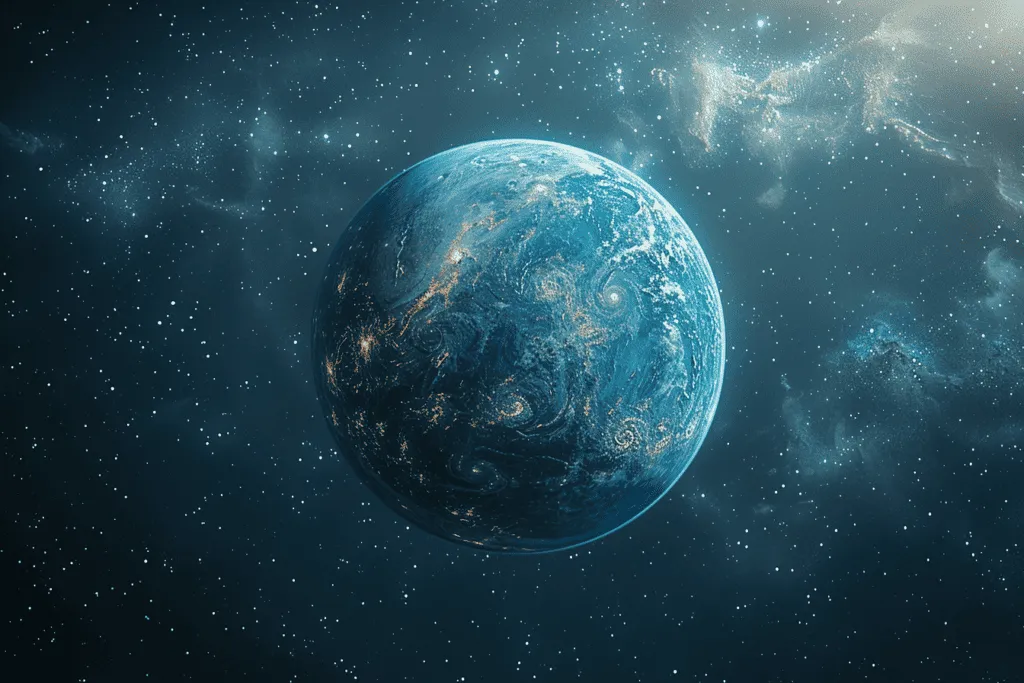
2. It Was the First Planet Located Through Mathematical Predictions
In 1846, a new planet was discovered, but not in the way you might think. Johann Galle didn’t stumble upon Neptune through a telescope. Instead, it was found because of some very smart math by Urbain Le Verrier.
This wasn’t just any discovery; it was groundbreaking.
Before anyone actually saw Neptune with their eyes, its position in the sky had already been predicted. Imagine that! Scientists knew where to look because of calculations and not by randomly searching the night sky. It’s like knowing exactly where to find hidden treasure without a map.
This discovery wasn’t just about adding another planet to our solar system’s family photo. It proved how powerful and correct Newton’s laws of motion and gravitation were. Before Neptune, these laws were just theories; after Neptune, they became undisputed facts that could predict an undiscovered planet’s location.
What makes this even more exciting is how rare such predictions are in astronomy. Finding something invisible based solely on its effects on other objects is no small feat—it requires incredible knowledge and understanding of physics and mathematics.
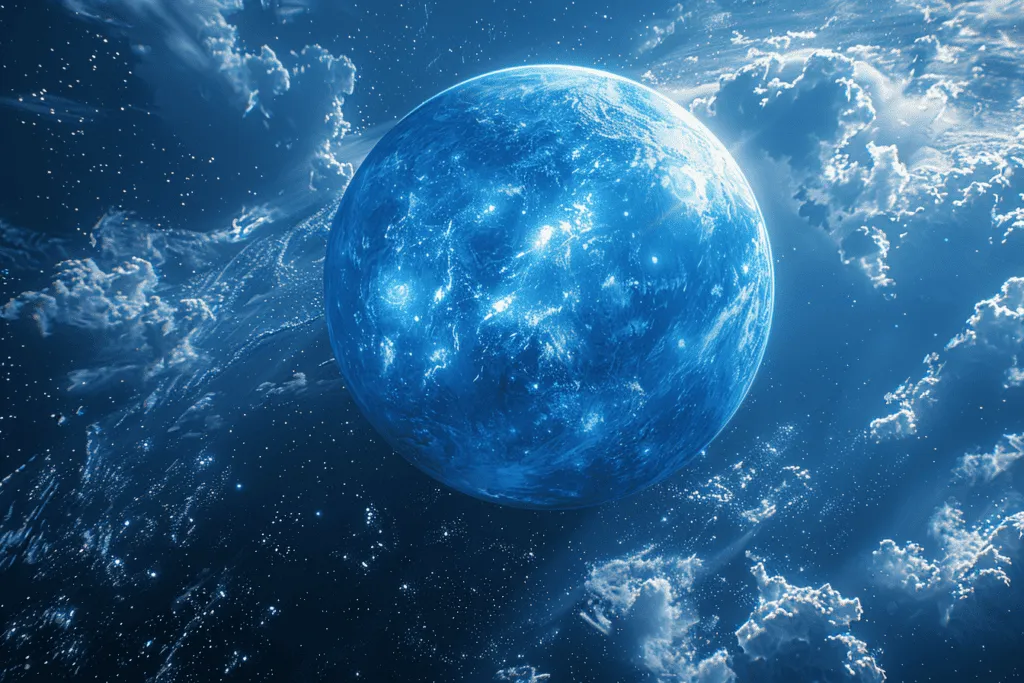
3. Neptune Has a Very Slow Orbit Around the Sun
Neptune takes its time traveling around the Sun. Imagine this: it completes one full orbit in 165 Earth years. That’s way longer than any of us will likely be around!
The last time Neptune finished an orbit was in 2011. This was a big deal because it marked the first complete orbit since astronomers discovered the planet in 1846. It’s like celebrating a very, very belated birthday.
Thinking about how long Neptune’s orbital period is puts things into perspective. Most of us get to see our home planet go around the Sun many times during our lives, but Neptune? It only makes that trip once every adult human’s lifetime. If you were living on Neptune (which would be pretty cool but also impossible due to its gas composition), you’d have just one birthday party… and it would be epic!
Here are some quick facts:
- Orbital Period: 165 Earth years
- Last Completed Orbit: 2011
- Equatorial Radius: About four times wider than Earth
So next time you’re feeling impatient, think about Neptune taking its sweet time circling the sun. It reminds us that everything has its own pace – even giant balls of gas millions of miles away.
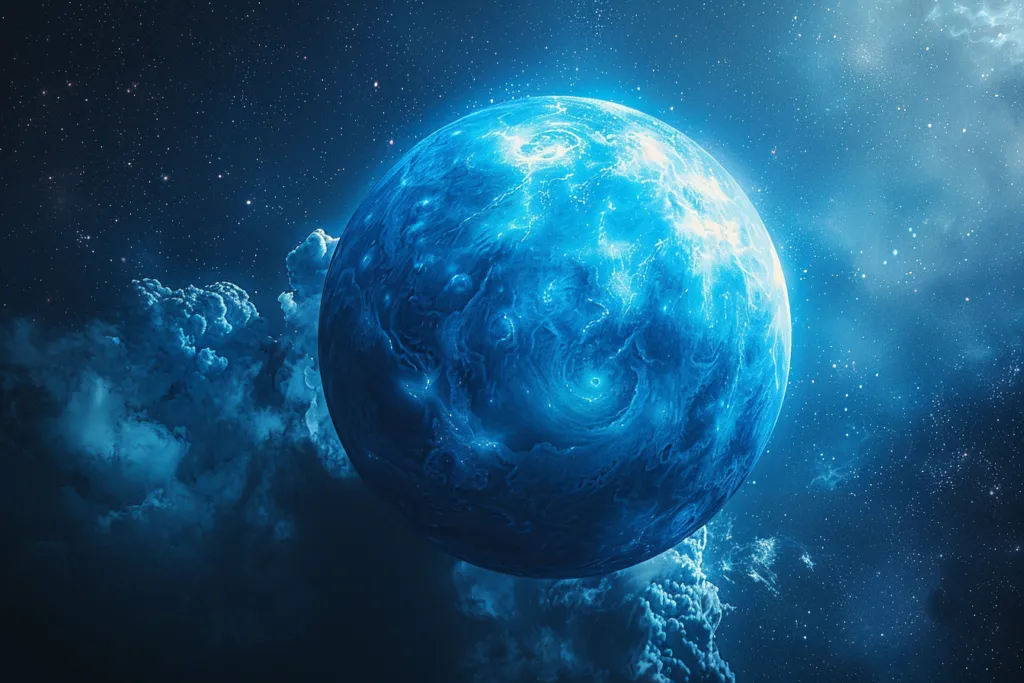
4. It Has the Strongest Winds in the Solar System
Neptune boasts the strongest winds in our solar system. Imagine wind speeds topping 1,200 miles per hour! That’s faster than any airplane can fly. These aren’t just breezes; they’re supersonic, meaning they zip through Neptune’s atmosphere faster than the speed of sound.
Why so windy? Neptune’s extreme weather patterns create storms that are not only wild but also fascinating to scientists. One standout feature is the Great Dark Spot. This high-speed storm system mirrors Jupiter’s famous Great Red Spot but with a twist unique to Neptune.
The mechanics behind these intense winds and storm systems involve complex interactions between Neptune’s atmospheric conditions and its magnetic field. The result? Cyclonic storms whipping around at unimaginable speeds.
Weather on Neptune makes Earth’s hurricanes seem like gentle gusts by comparison. Here, we talk about storms that stretch thousands of miles across with winds howling at speeds that could easily shred anything in their path.
5. Neptune is Named After the Roman God of the Sea
Neptune’s striking deep blue color is what first catches the eye. This isn’t just a pretty feature; it has historical significance too. The name Neptune itself comes from the Roman god of the sea, chosen specifically for this planet because its vibrant blue appearance reminded astronomers of the ocean.
The Romans, much like their Greek predecessors who worshipped Poseidon, revered sea gods due to the vast and mysterious nature of Earth’s oceans. Neptune (the planet) embodies this mystery not just in color but in its distant, cold presence in our solar system. It’s as if it holds secrets about the universe that we’re yet to uncover.
This naming convention isn’t unique to Neptune alone but reflects a broader tradition of naming planets after deities that embody their most striking features or positions in ancient mythology. In this case, Neptune’s named for its watery appearance which closely aligns with what both Roman and Greek cultures felt when they looked upon Earth’s seas – a sense of awe at something beautiful yet unfathomable.
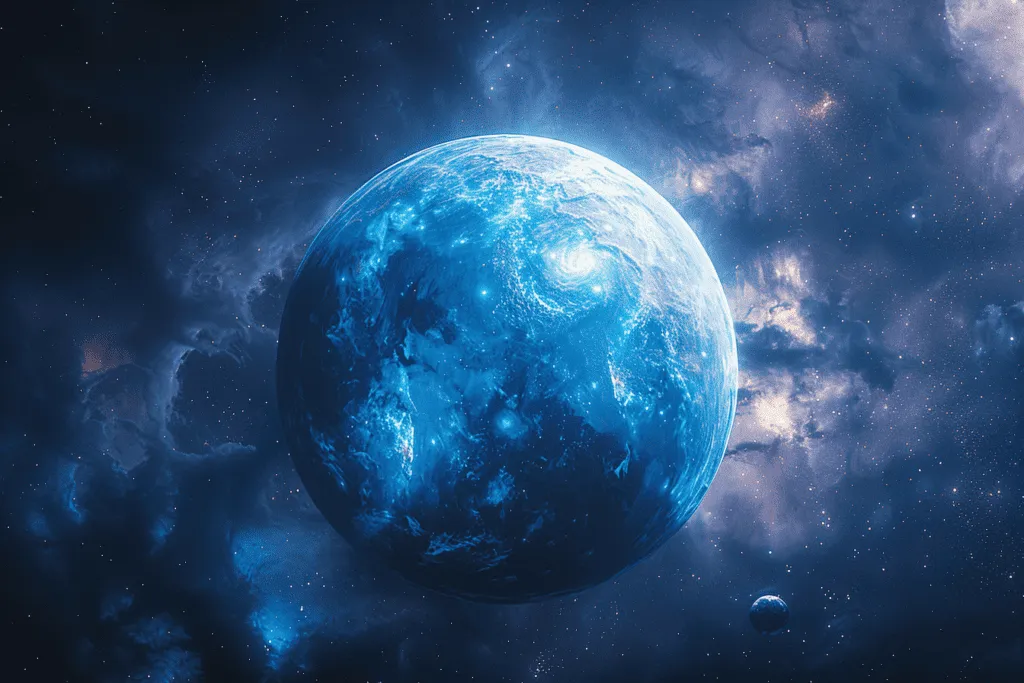
6. The Planet Has a Strikingly Blue Color Due to Methane in Its Atmosphere
Neptune’s strikingly blue color catches everyone’s eye. But have you ever wondered why it looks so vividly blue? The secret lies in the methane present in its atmosphere.
Methane is a gas that absorbs red light and reflects blue light back into space, giving Neptune its gorgeous blue hue.
Interestingly, Neptune appears even bluer than Uranus, another giant planet with methane in its atmosphere. This deeper shade of blue on Neptune compared to Uranus can be attributed to the presence of more atmospheric methane and possibly other unknown atmospheric components that enhance the color saturation.
Adding to this visual spectacle are clouds and haze layers floating high in Neptune’s atmosphere. These cloud tops scatter sunlight before it can penetrate deep into the atmosphere, enhancing the overall saturation of the blue color we see from Earth. The combination of these elements makes Neptune one of the most visually stunning objects in our solar system.
7. Neptune’s Largest Moon, Triton, Orbits in the Opposite Direction of Most Other Moons
Triton stands out among Neptune’s moons for a few fascinating reasons. One of the most intriguing is its unique orbit.
Unlike most moons that orbit their planets in the same direction as the planet spins, Triton does the opposite. It orbits Neptune retrograde or backward.
What makes this even more interesting is where Triton likely came from. Scientists believe it was captured from the Kuiper Belt, a region far beyond Neptune filled with icy bodies and remnants from our solar system’s formation. This capture event explains why Triton moves differently compared to other moons.
But there’s more to Triton than just its unusual path around Neptune. This moon shows signs of being geologically active. Among its most remarkable features are active geysers spewing nitrogen ice into space. These geysers suggest that beneath its icy surface, Triton may harbor a subsurface ocean heated by tidal forces caused by its peculiar orbit.
8. It Has a Thin Collection of Rings
Neptune’s rings are a fascinating feature of the planet, primarily composed of ice particles and dust grains. Unlike the vivid and easily visible rings of Saturn, Neptune’s are much fainter and require high-resolution images to be seen clearly.
The planet boasts five main rings, each named after astronomers who significantly contributed to Neptune studies. These include Galle, Le Verrier, Lassell, Arago, and Adams.
The Adams Ring is particularly interesting due to its unique ring arcs or clumps – a phenomenon not observed in other planetary ring systems.
These arcs in the Adams Ring have sparked curiosity among scientists about their formation. It’s believed that the gravitational pull from Neptune’s moons might play a role in maintaining these clumps. This characteristic sets Neptune apart from other planets with ring systems.
Observing these rings isn’t an easy task; it often requires a small telescope with sufficient resolution capability. Despite their elusive nature, studies of these icy layers offer clues about the planet’s composition and evolution.
In comparison to other gas giants’ rings within our solar system, Neptune’s stand out due to their distinct features like the arc formations within the Adams Ring. They provide valuable insights into cosmic phenomena such as planetary rotation periods and internal heat processes that influence ring dynamics.
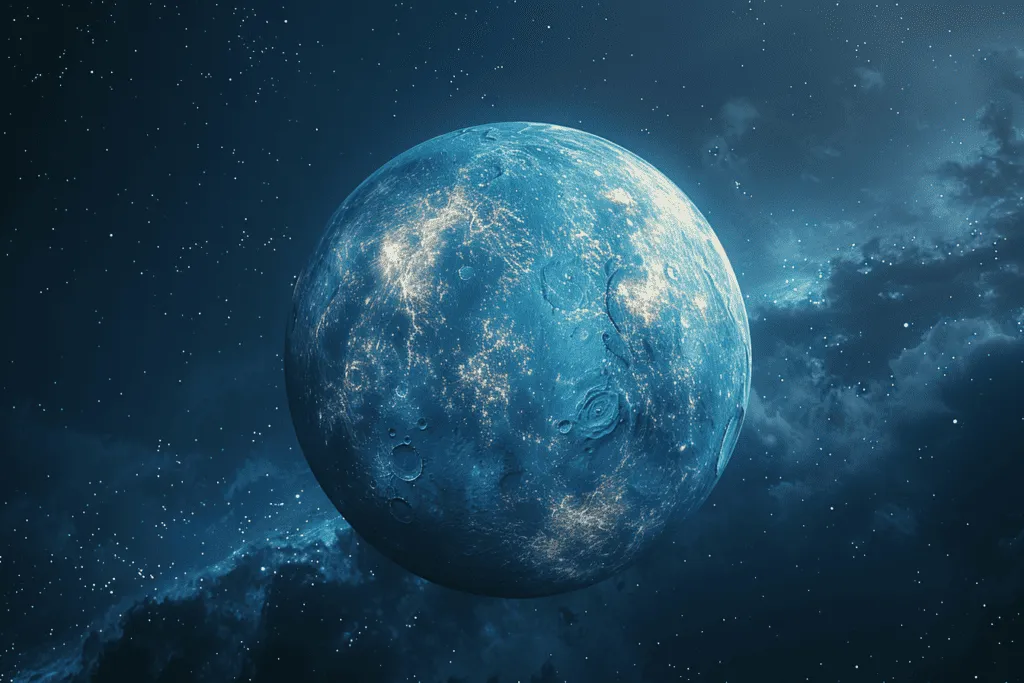
9. Neptune Cannot Support Life as We Know It
Neptune’s average temperature plunges to a chilling −214 °C (−353 °F). Imagine the coldest winter day you’ve ever experienced, and then imagine it much, much colder. That’s Neptune for you, far beyond what any human or known life form could withstand.
The atmosphere on Neptune is not welcoming either. It’s mainly made of hydrogen, helium, and methane. This mix doesn’t provide the oxygen we breathe here on Earth. Plus, the high pressure would crush anything familiar to us living at sea level.
But that’s not all; Neptune doesn’t even have a solid surface for us to stand on. Instead, it boasts a deep ocean made of water and ammonia stretching over its rocky core. Picture an endless sea more hostile than any found on our planet—no land in sight where life as we know it could take root or build a home.
10. Voyager 2 is the Only Spacecraft to Have Visited Neptune
In 1989, something amazing happened. Voyager 2, a spacecraft, made a historic flyby of Neptune. This was the first time we got up close and personal with this distant planet.
Voyager 2’s journey brought it about 3,000 miles above Neptune’s north pole. Imagine being that close to such a mysterious world! Its closest approach allowed us to see Neptune like never before.
The spacecraft sent back the very first close-up images of Neptune and its moons. Before this mission, our pictures of Neptune were just tiny dots from far away. Thanks to Voyager 2, we could finally see the planet’s stunning blue color and its swirling storms in detail.
While other telescopes like the Hubble Space Telescope have observed Neptune from afar since then, none have visited it directly like Voyager 2 did. This makes Voyager 2’s mission incredibly special because it provided invaluable data that scientists are still studying today.
Frequently Asked Questions
Why is Neptune called the eighth planet from the Sun?
Neptune snags the title of the eighth planet because it’s furthest from the Sun in our solar system, chilling way beyond Uranus.
How was Neptune discovered?
Unlike its celestial siblings spotted through telescopes, Neptune played hide and seek until mathematicians crunched some numbers and predicted where to find it. It’s like finding a hidden treasure with a math map!
Why does Neptune have such slow orbits around the Sun?
Neptune takes its sweet time, 165 Earth years to be exact, to complete one lap around our star. It’s like a marathon runner on an incredibly long track that just keeps going and going.
What makes Neptune’s winds so special?
Hold onto your hats! Neptune boasts the wildest winds in our solar system, whipping up storms faster than a speeding bullet train.
Why is Neptune so blue?
Thanks to methane in its atmosphere acting like a color filter, Neptune rocks a deep blue hue. It’s as if it’s always dressed for an elegant gala in space.
Can you tell me about Triton, Neptune’s moon?
Triton is quite the rebel – orbiting backward compared to most moons. Imagine swimming against the current; that’s Triton for you.
Does Neptune have rings?
Yes, but don’t expect Saturn-style bling. Its rings are more like delicate whispers of dust circling around it—a minimalist accessory if you will.
Is there any chance life exists on Neptune?
Life as we know it would throw in the towel on icy-cold and stormy Neptune. It’s not exactly what you’d call hospitable unless you’re into extreme weather adventures without oxygen!
Has any spacecraft visited this distant world?
Voyager 2 had an exclusive meet-and-greet with Neptune back in 1989.

